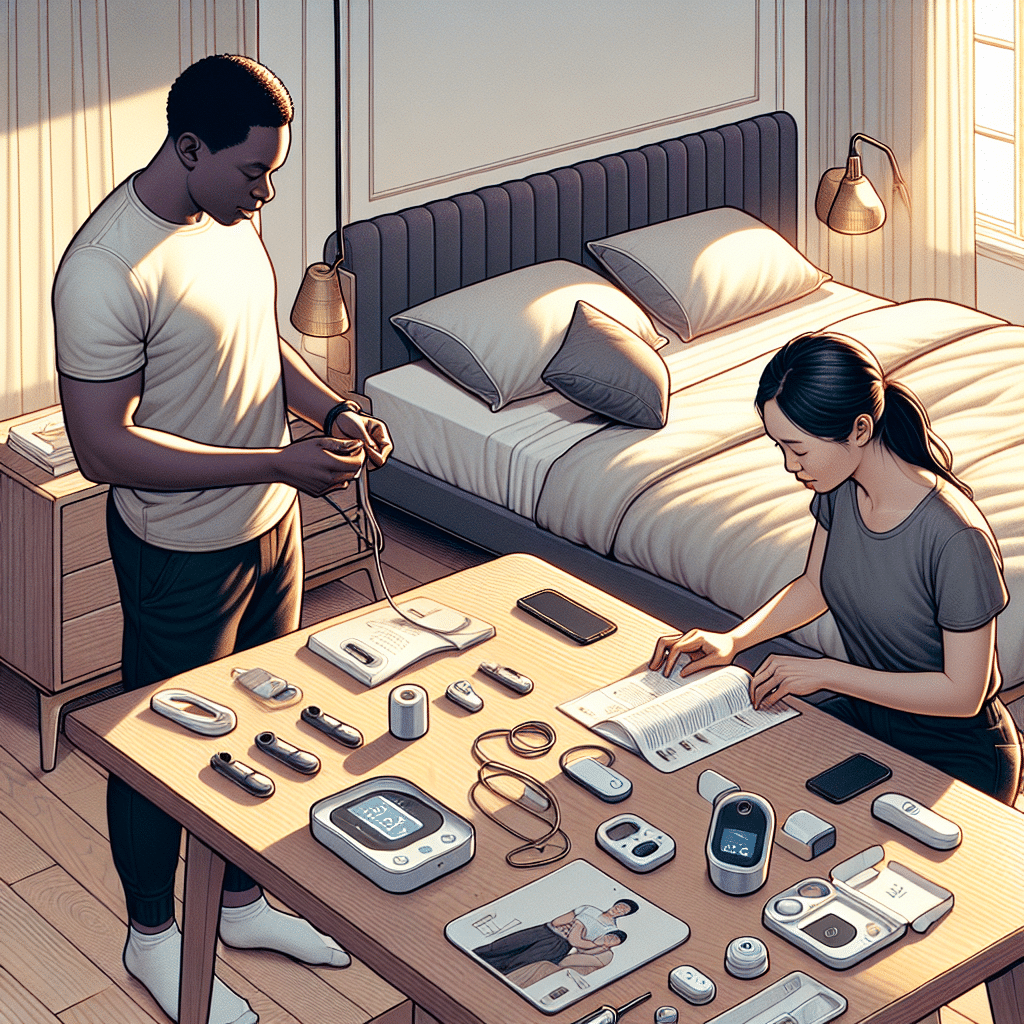Understanding Sleep Sensors: The Future of Sleep Tracking
What Are Sleep Sensors?
Sleep sensors are devices designed to monitor various parameters during sleep to improve sleep quality. They can track sleep patterns, movements, heart rates, and even environmental factors like room temperature and noise levels. Popular types include wearable devices (like smartwatches) and non-contact devices (like bed sensors).
Types of Sleep Sensors
1. Wearable Sleep Trackers
Wearable sleep trackers, such as fitness bands and smartwatches, are popular for their convenience. These devices typically use accelerometers to detect movements and measure heart rate variability. They often pair with smartphone apps to provide data visualization and insights.
Pros:
- Provide detailed data on sleep stages.
- Can monitor heart rate and calories burned.
- Ideal for active individuals.
Cons:
- Comfort may be an issue for some users.
- Battery life may require frequent charging.
2. Non-contact Sleep Sensors
Non-contact sleep sensors, typically placed under the mattress or on the bedside table, utilize radar or infrared technology to monitor sleep patterns. These advanced devices can provide deep insights without the need to wear anything during sleep.
Pros:
- No discomfort from wearing a device.
- Continuous, unobtrusive monitoring.
Cons:
- May not provide as detailed biological metrics like heart rate.
- Setup can be more complex.
Key Features to Look For in Sleep Sensors
1. Sleep Stage Analysis
A solid sleep sensor should distinguish between different sleep stages, such as light, deep, and REM sleep. This can help users identify patterns and areas for improvement.
2. Heart Rate Monitoring
Monitoring heart rate can provide insights into overall cardiovascular health and stress levels during sleep, offering a comprehensive view of sleep quality.
3. Environment Tracking
Factors like noise, light, and temperature can significantly affect sleep quality. Advanced sensors monitor these elements, helping users create a more conducive sleep environment.
Setting Up Your Sleep Sensor
Step 1: Choose the Right Device
When selecting a sleep sensor, consider your lifestyle, preferences, and specific needs. Research various options, read reviews, and compare features. Determine if you prefer a wearable or a non-contact option based on how disruptive it might be to your sleeping patterns.
Step 2: Installation and Setup
For wearable devices, follow these guidelines:
- Charge your device fully before the first use.
- Download the corresponding app for your smartphone or tablet.
- Sync the device with the app following the provided instructions, often achieved through Bluetooth connection.
For non-contact sensors:
- Place the device according to the manufacturer’s guidelines—usually under the mattress or on the bedside table.
- Ensure that it’s positioned to effectively monitor sleep without obstructing other devices or disrupting the bed’s functionality.
Step 3: Configure Settings
Adjust settings within the app to tailor tracking parameters to your preferences. This may include:
- Setting sleep goals (optimal amount of sleep).
- Turning on notifications for sleep-related reminders.
- Customizing environmental alerts to ensure optimal conditions for sleep.
Tips for Optimizing Sleep with Sensors
1. Maintain a Regular Sleep Schedule
Encourage consistent sleeping patterns by going to bed and waking up at the same times every day. Sleep sensors benefit from regularity and can provide clear insights into your sleep cycles.
2. Create a Favorable Sleep Environment
Utilize the data from your sleep sensor to optimize your bedroom conditions. Keep the room dark, quiet, and cool. Use earplugs, eye masks, or blackout curtains if necessary.
3. Analyze Your Sleep Data
Regularly review the insights provided by your sleep sensor. Many apps offer visual graphs and trends, making it easier to spot connections between lifestyle choices and sleep quality. Look for patterns related to sleep duration, disruptions, and environmental factors.
4. Make Lifestyle Adjustments
Based on your sleep data, consider making small lifestyle changes. Reducing caffeine and alcohol intake, incorporating relaxation routines, and staying active during the day can contribute to improved sleep quality.
Troubleshooting Common Issues
Problem 1: Inaccurate Data
If your sleep sensor provides inconsistent data, try the following troubleshooting steps:
- Ensure the device is properly positioned or worn.
- Calibrate the device as directed by the manufacturer.
- Make sure to keep the app updated.
Problem 2: Device Discomfort
For wearable sleep sensors, discomfort may arise. Consider:
- Trying alternate bands or adjustments to the fit.
- Wearing the device loosely or on a more comfortable wrist.
Problem 3: Syncing Issues
If the device frequently disconnects:
- Check Bluetooth settings on your smartphone.
- Ensure the app has permission to access the device’s Bluetooth.
- Restart both the device and smartphone.
The Future of Sleep Tracking Technology
As technology progresses, sleep sensors will continue to evolve, incorporating advanced features like AI-driven insights and integration with smart home devices. Look for innovations such as personalized sleep coaching based on collected data, more accurate physiological measurements, and broader environmental analytics.
Final Thoughts
Setting up sleep sensors can greatly enhance your understanding of your sleep patterns and overall health. By choosing the right device and effectively utilizing the data, you can optimize sleep quality, leading to positive effects on both mental and physical well-being. Implement techniques based on your findings and continue to adapt your sleep environment. The goal is to create conditions conducive to a better night’s rest, paving the way for improved health, productivity, and quality of life.
